Community
Vi erbjuder inspirerande miljöer för kreatörer att växa, samarbeta och hitta gemenskap. Mer än coworking – det är nyfikenhet, nya affärsmöjligheter och kreativ kraft. God mat, dryck, kultur och ständigt utvecklande ytor. Våra medlemmar säger att det är detta som gör A house unikt.
Välj destination

Ark / Intervju
2025-07-08
“Livet är för kort för att det ska skava.”
Från Allsvenskan och dammsugarförsäljning i Singapore till affärscoach för teamutveckling på hög nivå. Möt Björn Levin, grundaren av WeMakers, som hjälper grupper att nå sina...

Katarinahuset / Intervju
2025-07-08
“Jag pratar gärna om varumärkesstrategi – eller Jay-Z”
Katarinahusets Johan Rynell kallar sig oberoende varumärkesstrateg. Det innebär att han hjälper kreativa byråer och företag (ofta startups och scaleups) att ta fram strategier och...
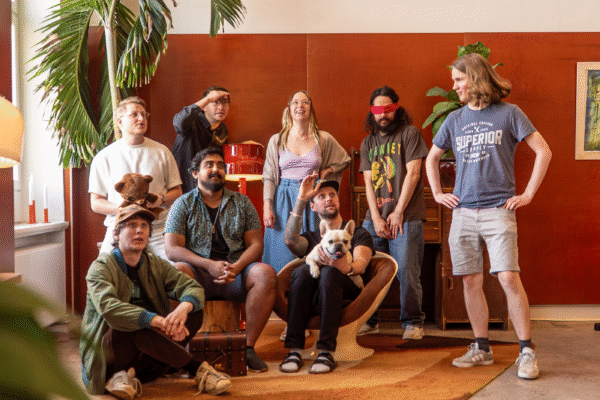
Ark / Intervju
2025-07-03
”Att se detaljer från en stor franchise bli spelbara – det är magiskt.”
Kod, kreativitet och community – The Gang utvecklar spel för världen över, numera från sitt HQ på A house Börshuset. Möt teamet som bygger världar...

Ark / Intervju
2025-06-25
”Räkna med starka filmer och eftertänksamma samtal på årets festival.”
CinemAfrica firar afrikansk film. Med sin årliga filmfestival har de sedan 1998 tagit berättelser från den afrikanska kontinenten och diasporan till svenska biodukar. Möt personerna...

Ark / Event
2025-06-23
A yard party 2025
Vår årliga sommarförklaring på A house Arks innergård gick nyligen av stapeln! TACK alla som kom och bidrog till årets A yard party. Foto: Line Persson

Katarinahuset / Event
2025-06-19
A summer party @ Katarinahuset
A summer party, Katarinahusets första sommarfest — där vi förvandlade Domus till en festival. Tack alla som kom och ett extra tack till Johanna Frostling...
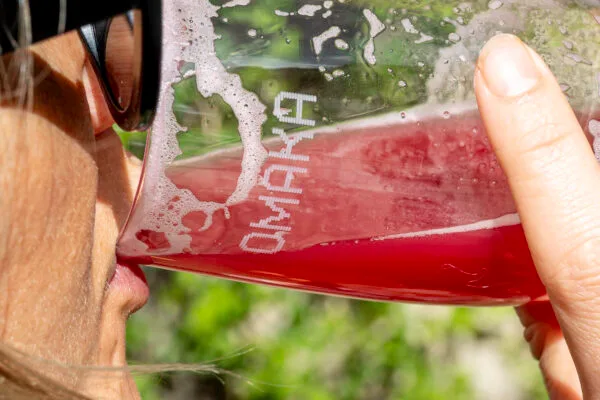
Ark / Intervju
2025-06-09
Mellanrätten är död – leve sommarölen!
Visste du att ett av Stockholms mest kreativa bryggerier bubblar – bokstavligen – nere i källaren på A house Ark? Vi slog oss ner på...
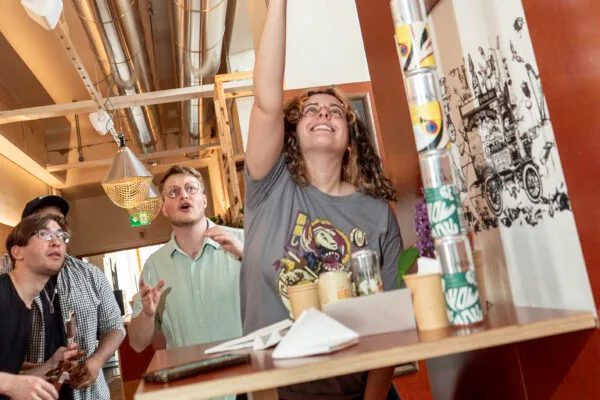
Börshuset / Event
2025-06-05
Sommarfest på Börshuset
Beerpong, pennan i flaskan och kardborredart! I onsdags var det A summer party i Slaktis.

Filmhuset / Intervju
2025-05-19
“Jag hittar inspiration i den gamla porträttkonsten”
Eva Edsjö är fotograf, medlem på A house Filmhuset och har fotat flera av våra andra medlemmar till olika intervjuer. Hon visste redan i högstadiet...

Börshuset / Intervju
2025-05-19
Säkerhet möter innovation
Möt våra nya medlemmar Milton Jordell, Johan Elfvengren och Philip Sommar från Vector Security Group – ett säkerhetsföretag med innovation, kvalitet och service i kärnan.

Ark / Intervju
2025-05-14
”Fall in love with a problem, not a solution.”
Från skrivbord till start-up: Vad händer när tre erfarna entreprenörer springer på varandra i vårt kreativa coworking-space? I Meadows fall föddes en innovativ satsning som...

Katarinahuset / Intervju
2025-05-07
“Engelska används för att man tror att det är fräckt – när svenska är både snyggare och begripligare.”
Patrik Hadenius är medlem på A house och är väldigt förtjust i språk. Just nu utreder han ett nytt språkmuseum i Stockholm, spanar i Sveriges...

Börshuset / Intervju
2025-04-02
”Vi tror att vi sparar tid när vi inte tar pauser.”
Hållbar vardagshälsa med Börshusets medlem Stina Lindhoff.
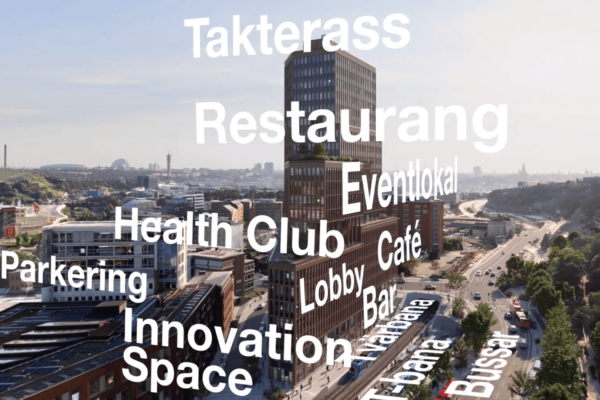
Sickla Central / Ny destination
2025-04-01
Ny destination 2025 – A house Sickla Central 💥
Ses i september!
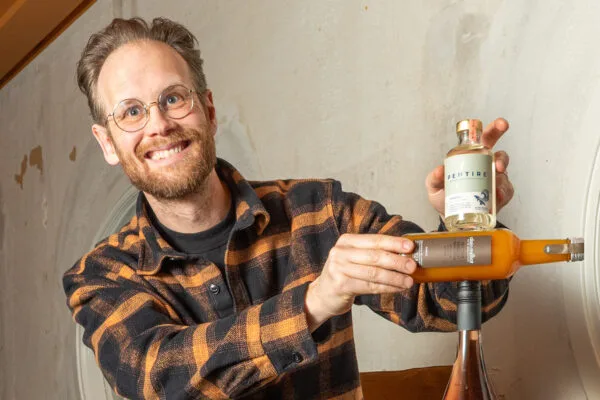
Börshuset / Intervju
2025-03-31
Från sommelier till pionjär
När David tog sommelier-examen från Grythyttan var det naturliga valet att jobba med vin – men han såg en annan lucka att fylla. Det var...
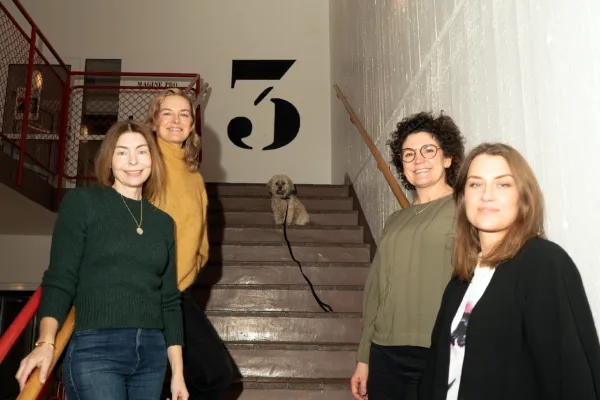
Ark / Intervju
2025-03-17
Medlemssamarbete: Tjejstafetten
Ett av A house främsta syfte är att uppmuntra till möten och samarbeten, och A house Ark är en plats som ger företag och frilansare...

Katarinahuset / Intervju
2025-03-12
Vintagetips och trendspaningar med Linnéa och Cristian
Linnéa Salmén är setdesigner inom reklam som även tar inredningsuppdrag med fokus på vintage. Cristian Lind driver designstudion Temporärt – även den med bakgrund inom...
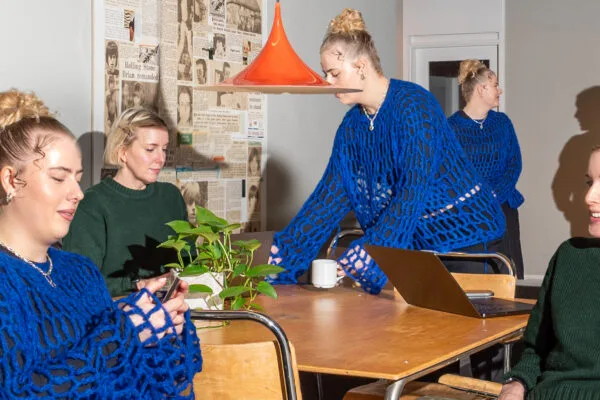
Ark / Intervju
2025-03-03
Möt Sting – Nordens största ekosystem för startups
Sting är som en turbo för startups. Med över 400 bolag inom tech, AI, klimat och hälsa på sin resumé hjälper de entreprenörer att växa...

A house
2025-02-28
Vart är vi på väg? Ny destination 2025

Filmhuset / Intervju
2025-02-25
Medlemmar från A house Filmhuset nominerade i Tempo Dokumentärfestival 2025
Wasim Harwill är konstnär och medlem på A house Filmhuset. Filmen "Är det här en plats att gro på?" är en del av hans konstnärliga...

Katarinahuset / Intervju
2025-02-17
”Bra musik är alltid bra musik, oavsett genre”
Pitch & Smith är en agentur som består av Emmy Windelhed, Karl Smith och Stefan Juhlin. De representerar svenska och utländska artister genom att boka...
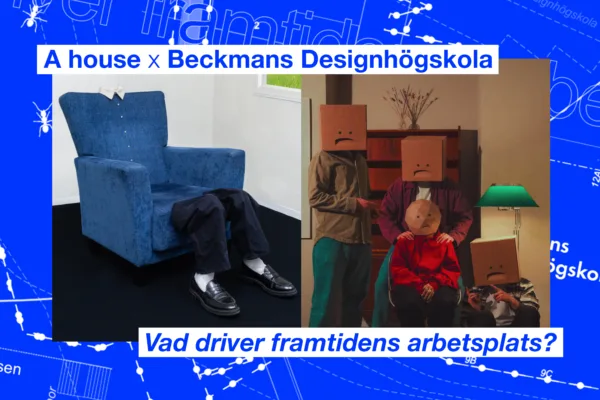
A house / Design
2025-02-12
Vad driver framtidens arbetsplats #3
Vad driver framtidens arbetsplats? Avgångsklassen Visuell Kommunikation på Beckmans har, i samarbete med A house, tagit fram olika lösningar. Låt oss presentera de sista tre...

Börshuset / Intervju
2025-02-07
Umno: digital plattform för samarbete och tillväxt inom food service-branschen
Vi är ett rätt brokigt men erfaret team med skills inom digital produktutveckling, branding, marknadsföring, ledarskap och innovation.
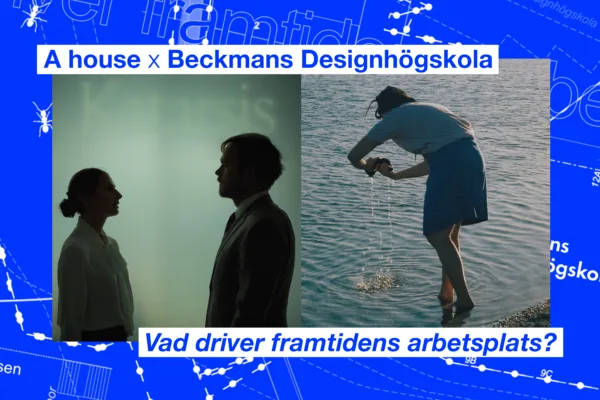
A house / Design
2025-02-04
Vad driver framtidens arbetsplats #2
Under 3 månader har avgångsklassen Visuell Kommunikation på Beckmans utforskat vad som driver framtidens arbetsplats, i samarbete med A house. I fredags ställde grupperna ut...

Katarinahuset / Intervju
2025-02-03
IFPI om streaming, AI och musikens framtid
IFPI Sverige är branschorganisationen för musikbolag, som säkerställer att artister och bolag får betalt när deras musik spelas.

Katarinahuset / Event
2025-01-31
A house x Beckmans Designhögskola vernissage
I 3 månader har avgångsklassen Visuell Kommunikation på Beckmans Designhögskola i nära samarbete med A house utforskat vad som driver framtidens arbetsplats. 24 januari ställde...
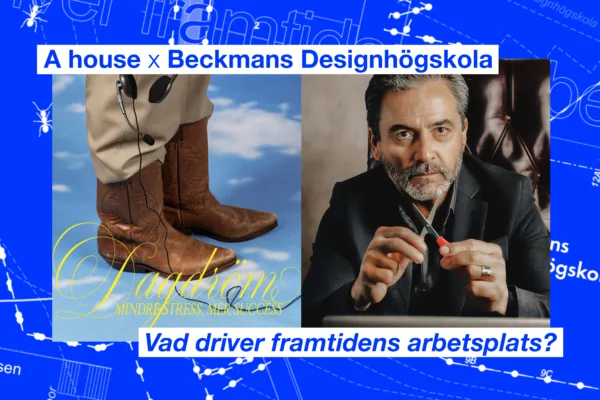
A house / Design
2025-01-29
Vad driver framtidens arbetsplats #1
Under tre månader har avgångsklassen Visuell Kommunikation på Beckmans utforskat vad som driver framtidens arbetsplats, i samarbete med A house. I fredags ställde grupperna ut...

Ark / Intervju
2025-01-22
Kallbryggt kaffe – varje dag, året om. Möt Mode Cold Brew!
Mode Cold Brews kallbryggda kaffe på tetra ligger helt rätt i tiden. För första gången har försäljningen av varmt kaffe i Sverige börjat minska, medan...

Börshuset / Intervju
2025-01-09
Framtidens transportmedel i storstäderna
Innovationen bland A house medlemmar sträcker sig långt över Sveriges gränser: Möt micromobility-startupen Bicelo!

Katarinahuset / Intervju
2025-01-08
Välkomna Tim Bergling Foundation!
Tim Bergling Foundation har nyligen flyttat in på A house Katarinahuset. Vi tog ett samtal med Klas Bergling, stiftelsens ordförande och grundare.
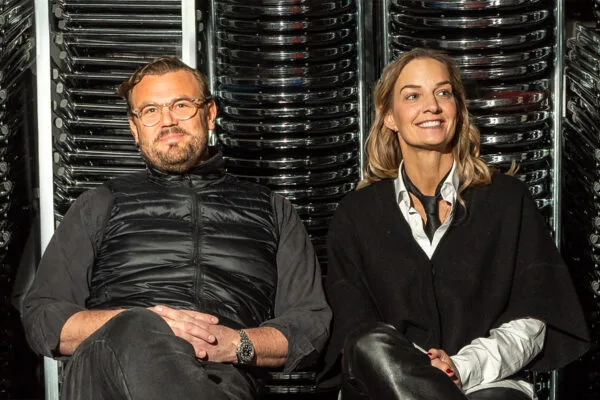
Börshuset / Intervju
2025-01-02
”Vi gillar när det vi gör bidrar till riktig förflyttning och värdeskapande.”
Trots att det var lite av en slump att Hummingbirds the Hybrid Agency hittade till A house i början av pandemin, så känns det som...

Katarinahuset / Event
2024-12-18
A house Xmas Mingle
Stort tack till alla våra medlemmar som kom och dekorerade pepparkakor, besökte spådamen, tatuerade sig och skålade in julen på Katarinahuset.

Börshuset / Intervju
2024-11-27
Designern bakom Kents identitet
Karl-Magnus Boske är en av A house allra första medlemmar, och sitter nu på Börshuset. Han är också designern bakom Kents branding och återföreningsturné.

Ark / Intervju
2024-11-22
Hållbara hårhjältar
ByBarb erbjuder en basgarderob med håraccessoarer och tillbehör som är gjorda för att leva länge, både när det kommer till design och kvalitet.
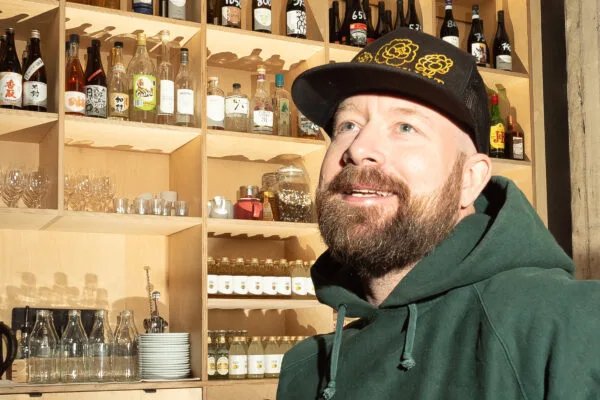
Ark / Intervju
2024-11-20
Stora smaker och slurp-kultur
Tengu är inte bara demonen inom japansk mytologi du hittar bland dina emojis (👺) – det är också ett av Stockholms bästa ramenställen.
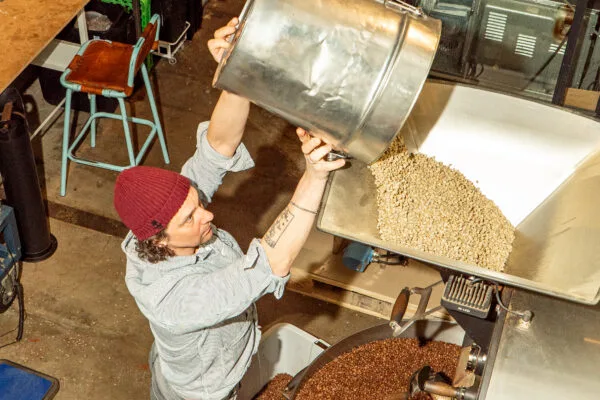
Börshuset / Intervju
2024-11-15
Kaffeindustrins utmanare
Häng med till Stockholm Roast. Här serveras koppen en knapp meter från kafferosten som omvandlar handplockade gröna, stenhårda bönor till sprött, brunt guld.

Katarinahuset / Intervju
2024-11-08
”Vi kommer inom kort lansera Pet Sounds Live”
Skivbolagsprofilen Johan Lindgren om Pet Sounds Bar, som du hittar i Katarinahuset.

Katarinahuset / Intervju
2024-10-22
“Vi fick 80 000 fans att registrera sig under en kväll!”
WasHere är medlemmar på A house Katarinahuset och jobbar med att hjälpa bolag att onboarda sin kunder till Apple och Google Wallet.

Katarinahuset / Media
2024-10-21
Vad är framtiden för coworking?
Ett utdrag ur tidningen ICON Magazine med vår Creative Director Richard Hammarskiöld, där han djupdyker i ämnet om den nya tidens kontor.

Börshuset / Intervju
2024-10-09
”I’d love to see a return of old-school sophistication”
Meet member Marie Chardin from Hamburg – one half of duo Studio Chardin Simon, that recently moved in to A house Börshuset.

Filmhuset / Intervju
2024-06-18
”Min förhoppning är att filmen leder till en förändring”
Möt Wasim Harwill: konstnär och medlem på A house Filmhuset som tidigare i år vann han Ung Svensk Form 2024 med sitt konstverk ”Ett hus...

Börshuset / Intervju
2024-07-29
”Jag tror väldigt mycket på varumärkets kraft och att det kan ha en större roll i att driva positiv förändring!”
En medlemsintervju med Anna Tengwall

Katarinahuset / Event
2024-07-08
Musiksverige samlas i A house Katarinahuset – öppnar den 2 september
Medlemsklubben A house, känd för sina kreativa arbetsmiljöer på Östermalm, Gärdet och i Slakthusområdet, öppnar sin största satsning någonsin i Katarinahuset vid Slussen.

Ark / Event
2024-07-05
Women Only Aw
Women of Ark – Det är äntligen dags att samlas i A yard för vår traditionella Women Only After Work, ett intiativ som uppmuntrar ett...

Filmhuset / Intervju
2024-01-30
“Vi ville uppnå totalt kaos”
Med projektet Sonic Erection vill Sesina Kahsay och Jade Brandt skapa en kanal för kreativa impulser och en plattform för alternativkultur i Sverige.

Filmhuset / Intervju
2024-04-03
”Vi vill vara en arena för att sprida kunskap, inspiration och uppmana till samtal”
Filmrummet på Svenska Filminstitutet fungerar som en mötesplats för personer inom filmbranschen. I vår intervju berättar projektledaren Hanna Söderstedt mer om sitt arbete och hur...

Filmhuset / Intervju
2024-07-05
Från djupaste allvar till befriande skratt
En medlemsintervju med manusförfattaren Anders Tempelman Foto: Eva Edsjö Efter att ha startat två reklambyråer och haft en gedigen karriär som både copywriter och reklamfilmsregissör...
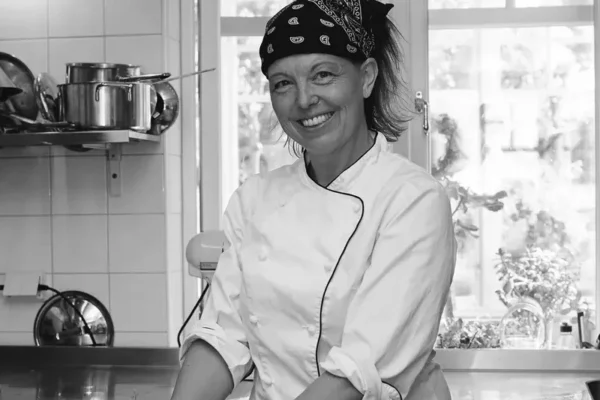
Ark / Mat & dryck
2023-11-15
Tuesday Lunch Chef
Vi välkomnar matentreprenören Lisa Lönner Pulkkinen hit imorgon som Tuesday Lunch Chef, mer känd som Husmor Lisa. Sedan tio år driver hon restaurang i sin...

Filmhuset / Intervju
2023-11-08
“Jag vill hitta den kortaste vägen till sanningen”
Regissören och poeten Ville Gobis första steg in i skrivandet ledde honom från nationella provet i gymnasiet till Stora scenen på Dramaten. Nu tar han...

Filmhuset / Intervju
2023-10-10
“Jag hoppas på mer plats åt de som tar större konstnärliga risker”
Filmskapare, konstnär och VJ. Elin Fiorentino Passanisis skapande rör sig fritt mellan konst-, film- och musikscenen. I bagaget har hon redan flera musikvideor, egna konstfilmer...
2023-10-10
”I hope for more space for those who take bigger artistic risks”
A member interview with artist, filmmaker and VJ Elin Fiorentino Passanisi. Photo: Eva Edsjö

Ark
2023-10-09
A conversation with Cissi Nilsson
Safety by Cilia was founded by Cissi Nilsson, who six years ago had an insight that changed everything.
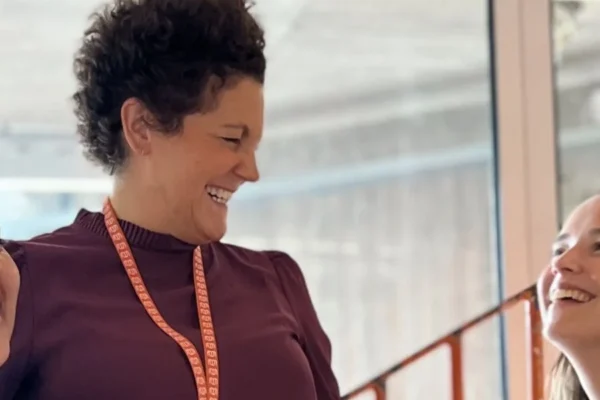
Ark / Showcase
2023-08-24
A showcase: Mamma United
A showcase is where A house member innovations come to light. Products are continuously showcased in A lobby to cultivate conversation and evaluate the process...

Ark / Event
2023-06-02
Wine Tasting
Welcome to yet another fun and illuminating wine tasting with Vinlagraren, this time with summer vibes! In your glass, you will find both sparkling and still,...

Ark / Intervju
2023-06-01
Reflecting on a principle – with Hedvig Dolling
Hedvig Dolling, Community Host at Ark, on which one of the A house guiding principles she is particularly dedicated to. – A house is an...

/ Showcase
2023-06-01
A showcase: Nicotext
A showcase is where A house member innovations come to light. Products are continuously showcased in A lobby to cultivate conversation and evaluate the process...

Filmhuset / Intervju
2023-05-23
“Vi måste bli bättre på att nå publiken”
Programchef på SVT, avdelningschef för filmstöd på Svenska Filminstitutet och nu VD för Stockholms nya regionala filmfond Film Stockholm. Man kan inte annat än imponeras...

Ark / Event
2023-05-17
Community Table
At A house we believe that the community is our most creative tool, as reflected in our principles. To help cultivate a collaborative culture and...

Ark / Event
2023-05-12
Mindful Creatives Day
Mindful Creatives Day is an activity-filled program dedicated to nourishing the collective creative brain at A house Ark. On May 4, we were blown away...

Ark / Intervju
2023-05-08
A conversation with Dig’s Carolina von Rosen
Carolina is the snack-innovator who started her company ”Dig” at age 27. Over the years, she has built a healthy company from the inside out...

Ark / Showcase
2023-04-26
A showcase: Punchline Tag
A showcase is where A house member innovations come to light. Products are continuously showcased in A lobby to cultivate conversation and evaluate the process...
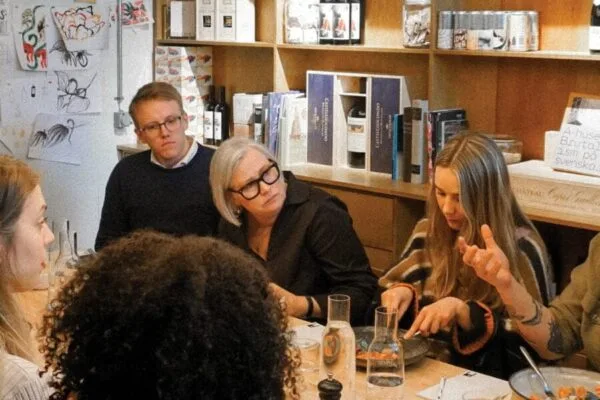
Ark / Event
2023-04-19
Food for thought – with Patrik Beskow
Food for thought is a new forum at A house Ark where members share a meal as they discuss questions that are relevant to the...

Ark / Intervju
2023-04-19
Reflecting on a principle – with Jarenya Svartsjö
Jarenya Svartsjö, Event Coordinator at Ark, on which one of the A house guiding principles she is particularly dedicated to. – The principle of sharing...

Filmhuset / Intervju
2023-03-28
“Det är samma bläck”
Manusförfattare, dramatiker och poet. Meron Mangashas texter rör sig mellan musiklagd poesi som ”Blått blod” till teater och dramatik, senast med föreställningen ”Mellan två våningar”....

Ark / Intervju
2023-03-20
A conversation with Stina Hedberg
The Lu family moved to Sweden from China in 1988, which also became the starting point for Yipin – a family-operated company that’s our constant...

Ark / Intervju
2023-03-06
Beckmans and A house presents Works of Essence
Since 2021, A house and Beckmans’ Student Union has had an on-going collaboration that invites Beckmans’ upcoming industry professionals to the A house destinations for...

Filmhuset / Intervju
2023-02-24
“Det är en oemotståndlig berättelse”
Redan som tonåring bestämde sig regissören och manusförfattaren Sarah Gyllenstierna för att ge sig in i filmbranschen. Sen dess har hon hunnit vara regiassistent åt...

Ark / Intervju
2023-02-20
A conversation with Anna Fridh
Anna Fridh got her first jobs as an illustrator in 1999 for Dagens Nyheter, Vårdguiden and Nöjesguiden. The following year, she graduated from Konstfack and...
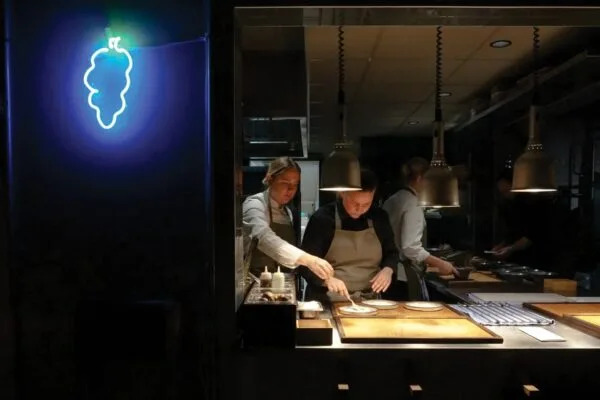
Ark / Mat & dryck
2023-02-13
TakeOver at OMAKA
TakeOver is a collective of female chefs, initiated in 2014 to create a network for women in gastronomy. Having cooked all over Sweden, for the...

Ark / Showcase
2023-02-01
Member Creation: How We Feel App
As part of Ark focusing our health strategy on mental health and development this year, we want to highlight “How We Feel” as a tool...

Ark / Showcase
2023-02-08
A showcase: Ekbacken Studios
A house Ark members Ekbacken Studios are currently showcasing their sustainable ocean-trash furniture in A lobby as part of Stockholm Design Week. A house Ark...

Filmhuset
2023-01-30
Processens vågor och ekofeministisk sci-fi
Foto: Eva Edsjö

Ark / Intervju
2023-01-16
A conversation with Oddgeir Hole
The vegetarian section at the supermarket can seem like a good choice regardless of what ends up in your cart; but as we remove products...
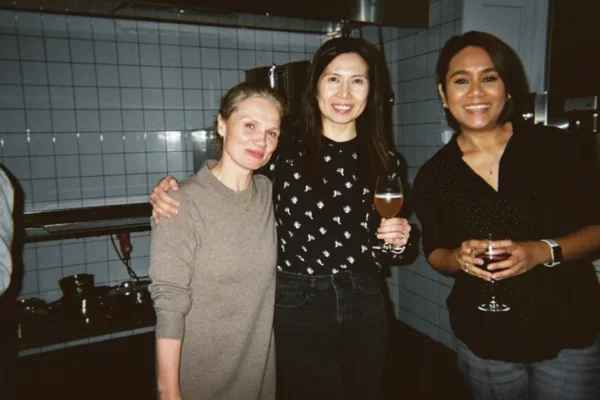
Ark / Event
2023-01-27
Women Only After Work
Recently, we hosted one of our most appreciated traditions at Ark, the Women Only After Work. A get-together in A kitchen guided by the A...

Ark / Event
2024-05-23
Women Only Aw
Women of Ark – Det är äntligen dags att samlas i A yard för vår traditionella Women Only After Work, ett intiativ som uppmuntrar ett...

Filmhuset / Film
2023-01-09
Våren på Cinemateket
Komedin, feelgoodfilmen, den utopiska berättelsen – det lyckliga slutet. Filmen skildrar och skapar lycka och hoppfullhet, men även dess motsatser. Våren 2023 undersöker Cinemateket den...

Filmhuset
2023-12-05
Från djupaste allvar till befriande skratt
Efter att ha startat två reklambyråer och haft en gedigen karriär som både copywriter och reklamfilmsregissör valde Anders Tempelman att sadla om till manusförfattare på...

Filmhuset / Event
2022-12-14
Filmvisning med Musoke
Som avslutning på sin nystartade workshopserie ”First Draft” för unga kreatörer inom film bjöd våra vänner på Musoke Productions in till en kvällsvisning på Filmhuset....

Ark / Intervju
2022-11-28
A conversation with Sophie Gyllenhammar
Member Sophie Gyllenhammar Mattsson’s first introduction to jewelry was as she went through her mother’s and grandmother’s jewelry boxes as a kid. As an adult,...

Filmhuset
2022-11-17
Studio F
Det är nästan overkligt, men efter nästan två år av planering, omplanering och ombyggnation är den äntligen färdig. Vår helt nya eventlokal Studio F, anpassad...

Filmhuset / Event
2022-11-09
Filmfestival i huset
Med dagliga visningar och tre fullspäckade Industry Days drog filmfestivalen igång här på Filmhuset. Masterclasses av kritikerrosade regissörerna Tarik Saleh och Ali Abbasi, presentationer av Works in Progress för både...

Filmhuset / Event
2022-10-17
Do the Right Thing
Med en smygvisning i bagaget har vi nu officiellt kickat igång Filmhusets nya analoga filmklubb! Först ut va en helkväll med Spike Lees mästerverk Do...

Filmhuset / Event
2022-10-12
Bokklubb #3
”Sheldon Hall och Steve Neale tillhör de filmforskare som, genom grävande i arkiv och gamla branschtidningar, visar att vad vi tror oss veta om filmhistorien...

Ark / Intervju
2022-09-26
A conversation with Amjad Aloul
Amjad Aloul can be seen as being the avant-garde to the many agencies and networks working with representation that we see today, having actively centered...

Ark / Intervju
2022-09-19
Hint x Organic Sweden
Trend forecasting and brand strategy agency Hint, founded by Johan Åkesson and Claes Bodén, is something of a spider in the A house web. Having...

Filmhuset / Film
2022-09-16
Bergman på besök
Skisser, bilder och en och annan demon. I foajén hittar du nu en exakt replika på Ingmar Bergmans regimanus till Fanny och Alexander, utlånad av...

Ark / Intervju
2022-09-12
A conversation with Upotential
Upotential is on course for making tools that have long been popular within sports psychology and coaching available to the masses. With an upcoming pop-up...
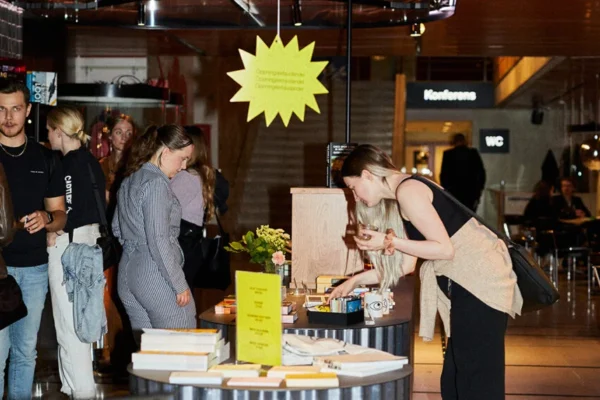
Ark / Event
2022-09-09
Filmfolk och shopfest

Filmhuset / Film
2022-08-31
Höstpresentation
Vi är redo att bänka oss i biostolen till familjehemligheter, ufon, onani, true crime och en och annan spya. Tack för gårdagens presentation av höstens...
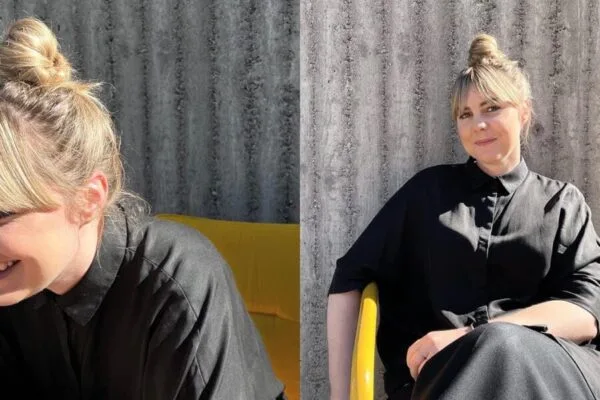
Ark / Intervju
2022-08-29
A conversation with Sara Strand
Sara Strand has spent the last decade in Sweden and the U.S. working within graphic design and art direction, during which she has developed a...

Ark / Intervju
2022-08-11
Filmhuset bokklubb #2
”Filmhistorien är fylld av historier om besvärliga inspelningar men få av dem triggar stresshormonerna som Carl Gottliebs skildring av inspelningen av Hajen (Jaws). The Jaws Log är...

Filmhuset / Film
2022-06-23
Hösten på Cinemateket
Kroppar som snubblat, sprungit, dansat, piskats, avklätts och skadats för att underhålla, bilda, tillrättavisa och stilla begär, för att skapa och rasera normer. Under hösten...

Ark / Intervju
2022-06-20
DIY-karriären och vikten av att vara en nörd
Fotograf, copywriter, filmskapare och creative. Kreatören John-Jamal Gille har gjort mer än många. Från att ha arbetat flera år i reklam- och musikbranschen har han...

Filmhuset / Film
2022-04-23
Filmhusets bokklubb #1
Med Sveriges enda specialbibliotek för film i huset har vi länge funderat på hur vi kan samarbeta för att visa upp innehållet på ett nytt sätt. Nu...

Filmhuset
2022-04-08
Att drömma stort och landa på månen
Från att se fem filmer om dagen under ett helt sommarlov, till att idag vara filmregissör. Vår residensmedlem Ronson Huynh började sin filmkarriär med en...

Filmhuset / Event
2022-04-06
Film, War & Independence
I helgen bjöd Filmhuset in till en välgörenhetskväll för att stötta filmskapare i Ukraina. Det med aktuella kortfilmer från krigets Ukraina följt av ett panelsamtal...
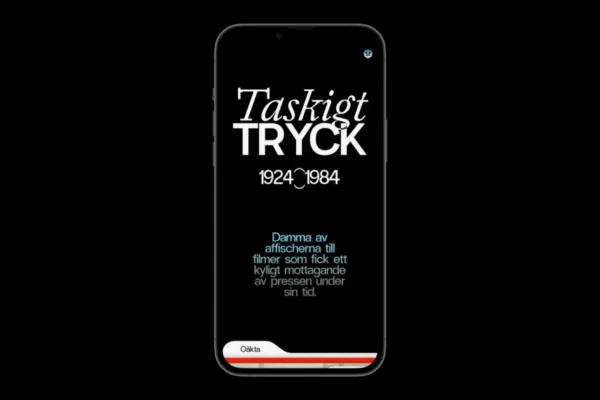
Filmhuset / Showcase
2022-02-23
I arkivet med Beckmans
Filmhuset har flera världsunika arkiv, men många vet inte ens om att de finns. Vi bjöd in Beckmans designhögskola att under fyra veckor utforska och...

Filmhuset / Intervju
2022-02-02
Sårbarhet och konsten att förverkliga luftslott
Efter att ha tröttnat på modevärlden hittade regissören och stillbildsfotografen Sofia Aedo Zahou sin väg in i filmen. Nu är hon aktuell med dansfilmen A...

Filmhuset / Film
2022-02-01
En vår i Exil
Filmare har, precis som andra konstnärer, försökt skildra och förstå känslan av hemlöshet som många bär med sig. Filmen ger exempel på hur en utifrånblick,...

Filmhuset
2022-01-31
Flytta in på Filmhuset?
Nu öppnar vi äntligen upp för fler inom film och rörlig bild att jobba från Filmhuset när vi öppnar vår nya Workclub. Idén om en...

Filmhuset / Design
2022-01-25
Myt blir mode
Sen vi flyttade in på Filmhuset har vi varit mer eller mindre besatta av Celsings öga och historien bakom det. Ögat är inbyggt i Filmhusets...

Filmhuset
2021-12-13
Shop shop shop
Dirty Dancing strumpor, Bergman kartor, Lena Nyman posters, Joachim Trier böcker eller vår helt egna Filmhuset-merch? Äntligen har vi öppnat vår nya shop i hjärtat...

Filmhuset / Event
2021-11-25
Filmfest
För ett år sedan flyttade A house in på Filmhuset med uppdraget att göra huset till en levande plats för film och rörlig bild; en självklar...
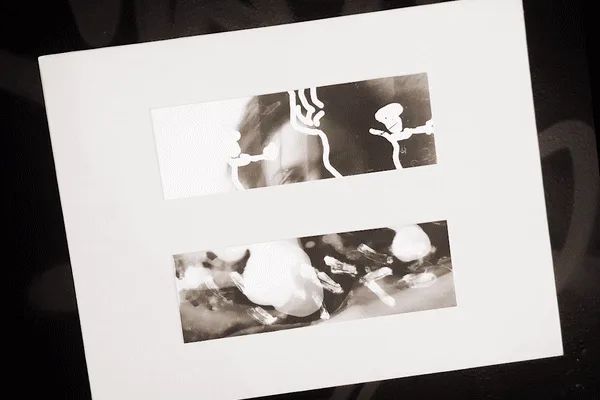
Filmhuset / Event
2021-06-18
Kraschade drönare och volatil konst
Space follows process. Under några veckor har vi gjort om vår studio till ett residensutrymme. 300m2 betong till fotografering, filminspelning och konst. Ett steg i...

Ark / Intervju
2021-06-21
A conversation with Tzocolate
Hi, A house member Lorielle. Tell us about your latest venture Tzocolaté!We are Sweden’s first and only brand dedicated to Filipino fine flavor chocolates. We...

Ark
2021-05-28
OUR PRINCIPLES #6
At A house, we have 7 principles making us a refined machine for creative development, this is the sixth one; Thinking by doing The best...

Ark / Event
2021-05-27
A house Event Award Winners 2021
The winner in the category best Collaboration 2020 is Slow Fashion Show in A room Slow fashion show overwhelming us that February evening with being...
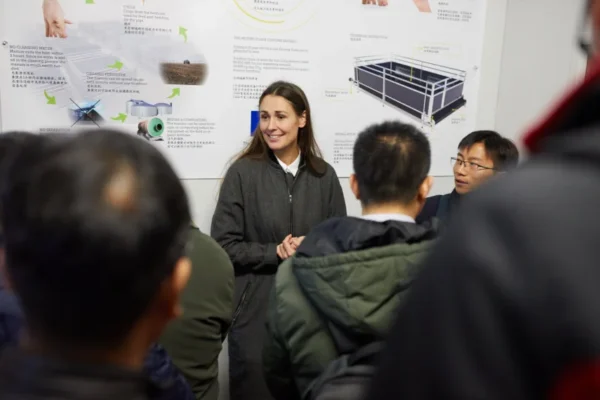
Ark / Intervju
2021-05-27
In Conversation with Moving Floor
At A house, we are proud to have such an impressive variety of future protein initiatives. In A sustainable Journal, we are taking the opportunity...

Ark / Intervju
2021-02-01
In Conversation with Färsking
Hello there A house member Calle at Färsking, you are saying you are ”no junk, just funk”, tell us more about your product! C: For...

Ark / Event
2021-05-26
NUNC Assembly III: Basement9
NUNC Assembly is a thematic symposium with narrative talks, discussions, immersive workshops, and interactive performances. This year we invite participants to ”Basement9” discuss and experience...

Ark / Intervju
2022-03-02
Diversity Changemaker!
HELLO Mona, A house member and founder of Fiiri Agency, Scandinavia’s first 360 inclusive model and diverse talent agency for BIPOC! What’s your mission with Fiiri? ...

Ark / Event
2021-05-07
Disey lobby takeover Re:nissage
Starting with a Re:nissage on May 20, we are welcoming legendary graffiti artist Disey to do a ”reuse lobby takeover” at A house Ark. We...

Ark / Intervju
2021-05-01
In Conversation with PINC
At A house, we are proud to have such a rich variety of future food initiatives. In A sustainable Journal, we are taking the opportunity...

Ark / Intervju
2021-04-22
In Conversation with Veat
At A house, we are proud to be surrounded by such an impressive variety of future food initiatives. In A sustainable Journal, we are taking...

Ark / Intervju
2021-04-21
A member story – in conversation with Linus Granborg from Levels
Hi there A house member Linus Granborg, what is it that Levels does? We pursue brilliant ideas, and turn opportunities into game-changing businesses. Working together...

Ark / Intervju
2021-04-13
A digital Stage – New streaming studio and stage at A house
A digital Stage is now open for bookings. Our brand new digital streaming studio and stage is located in our brutal venues A stage /...

Ark / Intervju
2021-03-12
In Conversation with Organic Sweden
At A house, we are proud to have such an impressive variety of future food initiatives. During Sustainable Week, we are taking the opportunity to...

Ark / Intervju
2021-02-16
In conversation with Jenny Björk
Hi there Jenny! You are the new House Director at A house, what do you dream big of this year? This year my focus is...

Ark
2021-02-15
OUR PRINCIPLES #5
At A house, we have 7 principles making us a refined machine for creative development, this is the fifth one; Rethink, refine, reuse, redesign Since...

Ark / Mat & dryck
2021-02-10
Future Protein Recipe Book
The purpose of this year’s Sustainable Week is for the community to become curious about future protein and how we can use it in our...

Filmhuset / Event
2021-02-03
Graffiti exhibition beyond our expectations
Thank you all for coming and experiencing the breathtaking graffiti art of Disey this weekend! Even though the queue outside was cold we felt so...

Ark / Intervju
2021-01-20
Vilma Zammel om lediga studios och det bästa med att vara en del av A house community
Hej Vilma! Du ansvarar försäljning av våra olika medlemskap. Vad är det bästa med att få introducera nya medlemmar till A house Community? Det bästa...

Ark / Intervju
2021-01-12
5 minuter med Tua Asplund
Tua Asplund, vd, delägare och medgrundare av A House på Östermalm. I år vill hon drömma stort igen och börjar värdigt med att öppna A...

Filmhuset / Event
2021-01-11
A slice of ways – I ett mellanrum med Graffitikonstnären Disey
Vad gör man med en lokal i mellanrummet mellan inflytt och ombyggnation? Under två veckors tid har graffitikonstnären Disey, en legendar inom sin subkultur, fått...
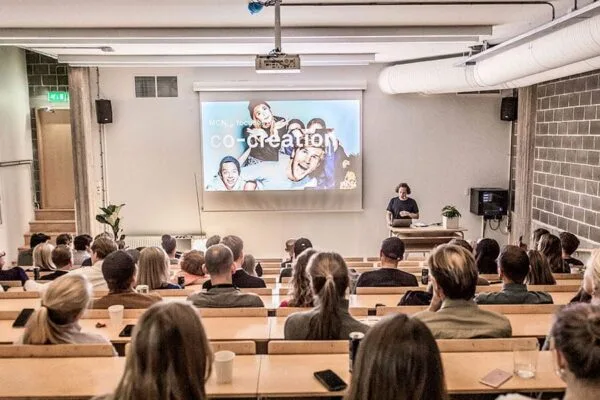
Ark
2021-01-11
Bespoke – Det skräddarsydda medlemskapet
För bara några år sedan var begreppet ”coworking” så gott som nytt i Sverige. Sedan dess har mycket hänt på marknaden och utbudet av olika...

Ark / Intervju
2021-01-01
Därför är vi trogna 70-talet – möt A house kreativa chef Richard Hammarskiöld
Brutalism, betong och en gammal Arkitekturskola. Det finns många därute som rynkar på näsan av bara synen på betongblocket som upptar ett helt kvarter på...

Ark
2020-12-22
Member Quotes 2020
We asked our members what A house vision ”A refined machine for creative development” meant to them and we are overwhelmed, at times amused and...

Ark / Intervju
2020-11-13
OUR PRINCIPLES #4
At A house, we have 7 principles making us a refined machine for creative development, this is the fourth one; ”Space follows process” Space matters....

Ark / Intervju
2020-11-06
A current Situation with Annika Jankell
Annika, what is your perspective on the development in your industry? A: Creative people and minds can often adjust to unexpected situations. If you’re willing...

Ark / Event
2020-11-03
A BLACK DOOR Pt 1
Thank you Växthuset, Moonica Mac and Vinstereo for co-creating a most needed magic October evening in our basement photographed by Margarita Kradjian. A black door...

Ark / Intervju
2020-09-22
A current Situation with Fredrik Franzon
What is your perspective on the development in your industry? BAUX operates in the global interior design industry and the reaction from the pandemic was...

Ark / Intervju
2020-09-10
STOCKHOLM ART GUIDE by Lydia Kellam
As Works by Friends is entering a new market, we want to explore our new habitat and its artist and creative scene. For years, Stockholm...
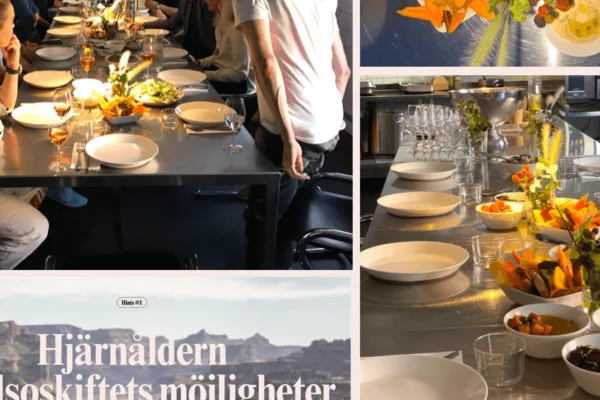
Ark / Event
2020-08-27
So, this just happened: Hint Session #01
What are Human Key Figures – and how can they impact the future journey of companies, customers and society? Last night A house members Hint...

Ark / Mat & dryck
2020-08-20
Nu öppnar OMAKA
Nu är det äntligen dags för invigningen av hela OMAKA, den 2 september slår OMAKA upp dörrarna för allmänheten. Det blir en blandning av konst...

Ark / Media
2020-08-10
Travelmag listing A house as one of the best coworking spaces in Stockholm
A house is one of the 10 best coworking spaces in Stockholm, according to Travelmag. We are very honored to be on the list along...
2020-08-10
Travelmag listing A house as one of the best coworking spaces in Stockholm

Ark
2020-07-09
OUR PRINCIPLES #3
At A house, we have 7 principles making us a refined machine for creative development, this is the third one; ”Creation requires recreation” We believe...

Ark / Intervju
2020-07-01
Nya trenden inom kontor: “smart sizing”
Hur viktig är den fysiska arbetsplatsen för anställda? Just nu letar många företag svar på den frågan i spåren av coronakrisen. A house ger sin...

Ark / Event
2020-06-23
NxtChapter pt.3 / A stage

Ark
2020-06-15
OUR PRINCIPLES #2
At A house, we have 7 principles making us a refined machine for creative development, this is the second one; ”Sharing problems, not just solutions”...

Ark / Intervju
2020-06-10
A current Situation with Fredrik Kempe
What is your perspective on the development in your industry and what is your guess, how long will this last? In our industry, air masks,...
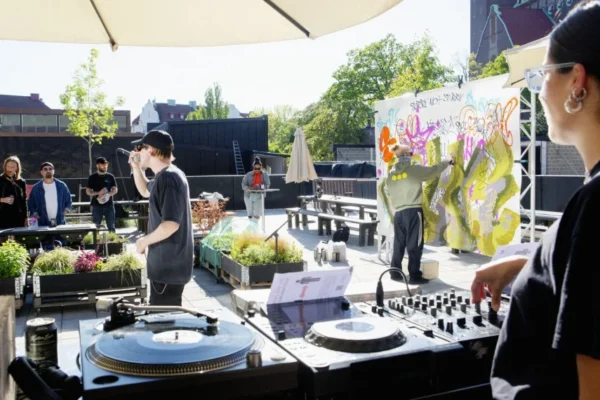
Ark / Event
2020-06-08
Nxt Chapter – A yard
Nxt Chapter rocking social distancing in A yard. 📸 Carla Orrego Veli

Ark
2020-06-04
A house sustainability work
A house is taking climate change highly seriously and we have done a genuine work to develop a long-term sustainability mission that the A house...

Ark
2020-05-31
Brand new spaces for work and retail
We live in interesting times, and the usually bustling atmosphere at A house has temporarily shifted to a more tranquil vibe. But don’t let the...

Ark / Design
2020-05-27
Throwback to ”Memories of Arkitekturskolan” by Lars Noren
We are proud, honored, and forever inspired by the words written for us by Lars Norén in 2015; In a country very nearly terrified by...
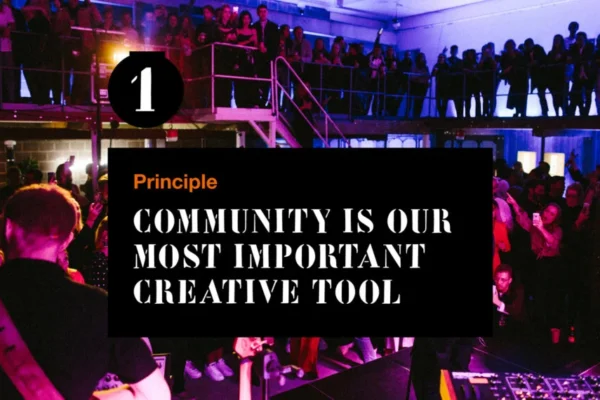
Ark
2020-05-25
OUR PRINCIPLES #1
At A house, we have 7 principles making us a refined machine for creative development, this is the first one; ”Community is our most important...

Ark / Intervju
2020-05-20
A current Situation with Hedda Spendrup
What is your perspective on the development in your industry? Despite all the tragedy and sad circumstances, I can see a new sort of creativity...

Ark / Intervju
2020-05-06
A current situation with Tua Asplund
-CEO at A house Tua, what is your perspective on the development in your industry? Communities are more important than ever. We have worked hard...

Ark / Intervju
2020-04-23
AMA with @memefulness (swe)
-Hej och välkommen @Memefulness , fett att du ställer upp på A house AMA!Hur mår du? -HEJ Franco! Jag mår toppen. Sol och kaffe på...

Ark / Intervju
2020-04-20
A current situation with Henna Keränen
– Head of Strategic Partnerships & Digital Marketing at Sting What is your perspective on the development in the start-up community? Can you name an...

Ark / Intervju
2020-04-16
AMA with Felix ”Deadwood” von Bahder (swe)
Hej Felix och VÄLKOMMEN till A house AMA!Hur är läget? Alltså tack! Läget är asbra. Hemmakontoret kokar! Q – Vad fick dig att börja med mode...
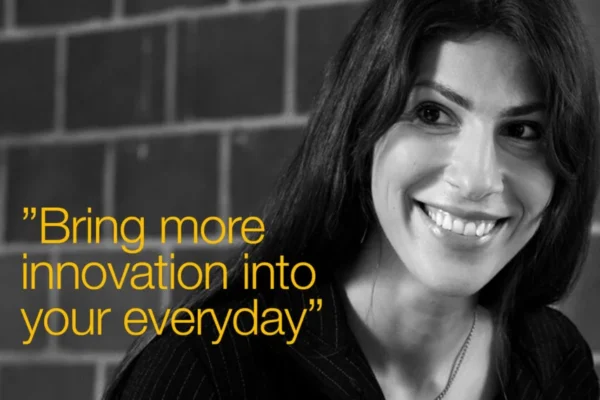
Ark / Intervju
2020-04-07
A current situation with
Head of brand strategy at Grow + Digitalist What good can come out of this? What mindset should we adopt? For one, this situation is...

Filmhuset
2024-07-05
Det är samma bläck
Manusförfattare, dramatiker och poet. Meron Mangashas texter rör sig mellan musiklagd poesi som ”Blått blod” till teater och dramatik, senast med föreställningen ”Mellan två våningar”....

Ark / Intervju
2020-03-08
A house CEO Tua Asplund
What does International Women’s Day mean to you?To me it is a celebration of equal rights! Boys and girls should enjoy the same rights and...

Ark / Intervju
2020-02-10
A conversation with
A community is all about serendipity. ”A conversation with” is a serie of member talks by me Tua Asplund, A house CEO and partner, having no...

Ark / Event
2019-10-22
Mateus clearance sale
Do you love a great plate? Then this is the clearance sale for you. Mateus sells selected products from the entire range. Both classics and...

Ark / Event
2019-05-27
Photos from A yard party
We want to send some love to everyone who came to A yard party. Best vibes ever! Also a big big big thanks to Gigital...

Ark / Intervju
2019-05-27
A house x PINC: Future Food
A House and PINC present the Future Food concept, a collaboration around the food of the future. In the fridge next to the entrance, A...

Ark / Event
2019-04-12
Exhibition: Målar du nåt fult så målar jag över
The artist-couple Jacqueline Östlind and Thomas OKOK Gunnarsson have been painting together since the fall of 2018. They work with ink, crayons and markers on...

Ark / Intervju
2019-04-02
Meet A house yoga teacher & member Dag Tolstoy
Hi Dag, what is it that you do here at A house when not being a yoga teacher? I work at Relate. We are trying...

Ark / Musik
2019-01-04
Jireel music video
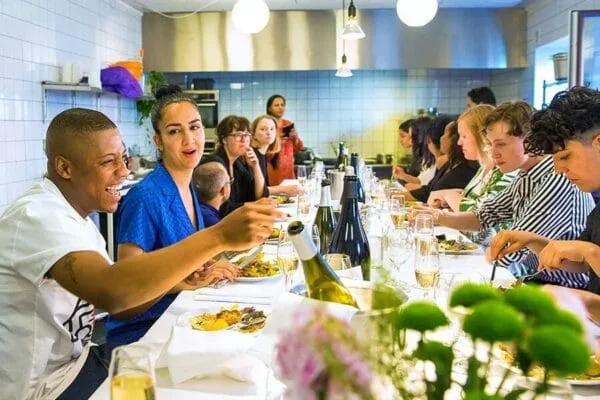
Ark / Event
2018-06-29
Lilla Namo release – A kitchen

Ark / Event
2018-06-28
”Osynliga Teatern” at A house
Thank you Osynliga teatern for using our space in the most thoughtful and beautiful way possible. Seeing, or being, your show Slutet was something special...
Ark / Intervju
2018-01-30
PROTOTYPA TALK & COCKTAIL

Ark / Event
2017-10-06
Protest Paintings in A lobby until 31/12
Statement by Harry Woodrow I have an unwavering curiosity and sense of wonder about the world, but I’m often left disappointed, frustrated and perplexed by...

Ark / Intervju
2017-10-04
Meet member Lydia Kellam
Hi Lydia, what is it that you do? With a passion for people, culture and society I help brands, agencies and organizations with social media...

Ark / Event
2017-10-01
A atelier turned into a secret garden
For sure, one of the most mind blowing settings we’ve seen this year in A atelier. Thank you Polarn & Pyret for showing us that...

Ark / Event
2017-06-13
Framtidslabbet på Politikerveckan Järva
A house/A Lab tar tillsammans med Svenska Dagbladet ett gemensamt grepp kring några av samtidens viktigaste frågor. Under en serie möten – med samtal, workshops,...

Ark / Event
2017-06-02
Den första konstutställningen
A house första konstutställning hänger hela sommaren (slut sista augusti)! Konstnärerna Carsten Höller, Hans Kvam, Anna von Hausswolff och Carl Michael von Hausswolff pryder lobbyn, mötesrummen...

Ark / Event
2017-05-19
Kleerup Release Recapture & Vernissage – tack!
En magisk afton på A house. Jan Åman var glad som en speleman. För konsten. För musiken. Kleerup var också glad, han är ju speleman....

Ark / Event
2017-05-09
Make it last loppmarknad – tack till alla som ställde upp
Kön ringlade sig långt ner på Karlavägen i söndags. Det kändes fantastiskt att kunna låna ut vår eventyta, A verkstad till detta mäktiga event –...

Ark / Intervju
2017-05-01
Meet Tua Asplund Hyllienmark
COO / Partner at A house – Talk with me about A house development process and the overall experience at A house. Favorite place at...

Ark / Design
2017-04-26
Design Sweden 60 Years
Welcome to celebrate Design Sweden 60 Years with an evening of talks by some of Sweden’s leading designers and creatives. As well as mingeling and...

Ark / Event
2017-03-02
Hack Lounge #200
Every Wednesday we lounge hack. This Wednesday will actually be the 200:d time we lounge hack. Quite a few startups have spent their initial time...

Ark / Event
2017-01-24
Simon Strand Inställd
Simon Strand? Inställd? På A house? Redan 1913 började idén om utställningen som fenomen att komma på skam, genom ett cykelhjul som ställdes in i...

Ark
2016-12-16
We have moved to the opposite wing!
The next step of our journey is here! Between Christmas and New years we have moved the front desk and lobby to our new entrance...
